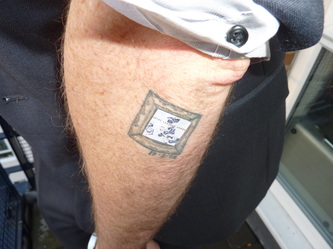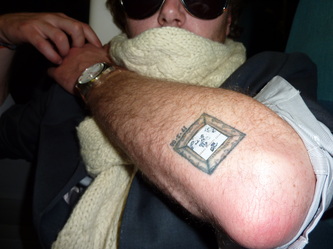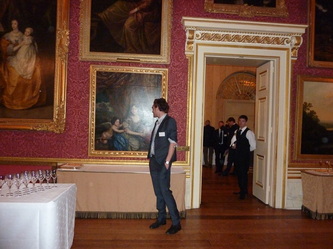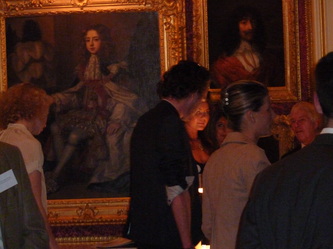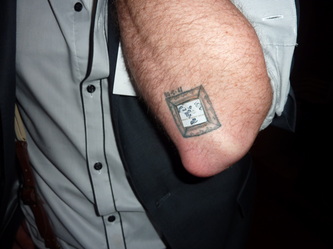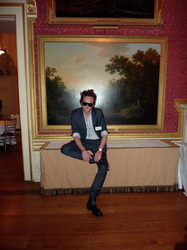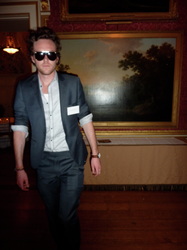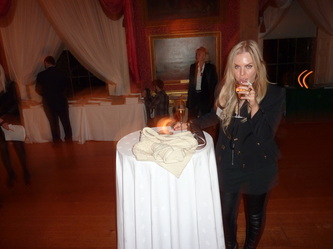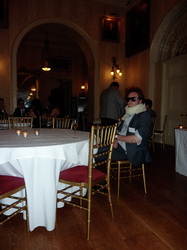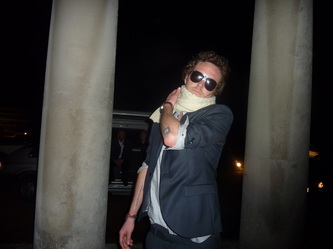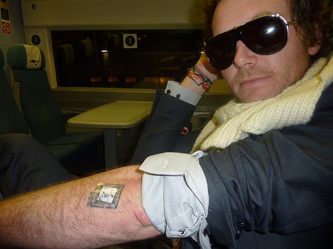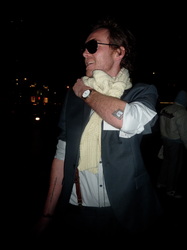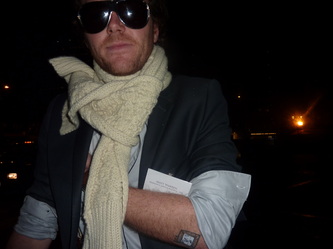Matthew Warren
19th November - 12th December 2010
Opening Reception - Friday 19th November
6 -8pm
Goodwood Estate
Chichester
West Sussex
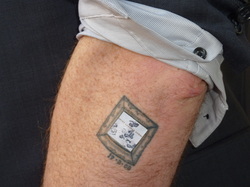
The Elbow Gallery is proud to announce the first solo show of Matthew Warren, whose work conflates the tropes of modernism with contemporary American Pop Culture through video, photography, and more recently, drawings.
Warren explores such themes as immortality, Hollywood iconography, voyeuristic perversities, celebrity ethos, iconology, power, wanderlust, and luminary obsession within the American media and it’s fan culture.
He has long been engaged with the mythology of Hollywood, creating a hybrid of art and cinema that has become an important strand within his practice. The artist invariably directs and redirects material from daily life to create dramas and refocus our attention on his particular loves and obsessions, fears and loathings. As an avid subscriber to 68 pop trash magazines, the media has become a principal obsession as he carefully collates and dissects material from real-life sources and lurid tabloids.
Continuing The Elbow Galleries exploration of exhibition space and the rift between public and commercial art, Warren has found an entirely fresh way to frame his obsessions by recycling Hollywood’s iconography. In doing so he reinvests the paling glamour of the incidental and the obscure with the grandeur of recovered memory.
With his show, he takes the theatrical and twists it, elaborating on the infrastructure of the media. By finding a paparazzi image in Google, reproducing that image as a drawing on hotel linen, and then re - photographing and reconstructing it as a solo exhibition as a digital print, he is in essence, reinventing false nostalgia in revisionism, whilst enforcing the media influence and reflecting the consumerism of the tabloids.
Ever since Hollywood invented it’s highly lucrative star system, the paparazzi have aided to fuel its high performance publicity machine. Particularly in recent history the paparazzi have become their own entity, spinning stories and manipulating public figures to both accentuate them to a higher plateau as a God like entity, and demoralizing their existence, often fluctuating between the two with the whim of a madman.
Warren chose the original image as it is not only a paparazzi shot of Britney Spears, but also features the paparazzi themselves, enhancing their omnipotence and the power struggle between them and their subject. The shot is slightly removed from unadulterated voyeurism, and instead acts as a mirror, internally reflecting and critiquing the viewer and the shadenfreaude we take in the profusion of media frenzy.
One persistent, constantly relative theme running through Warrens work is the idea that fame, while shaped by a certain extent by dominant culture, operates quite differently amongst the consumers of fame than it does in the minds of the people who manufacture it. Fame, in the American context, equals existence itself – this is a country where the idea of ‘being somebody’ means that other people know about you. The shot exposes these hidden layers, shattering this illusion with the viewer acting as the paparazzi, reflecting our own mundane existence and the unique assertion of self-belief that we obtain from idolizing normal people, who we choose as a culture to venerate.
This idea is monopolized due to the image being drawn on a SLS Hotel shoe bag. The SLS hotel is one of many highbrow venues in Los Angeles where stars can indulge in exhibitionism and carries it’s own connotations regarding infamy and supremacy.
The look of the exhibit is, given its size, apocalyptically desolate too acting as a vessel for the viewers baroquely sepulchral outlook as insinuated through the fetish world of celebrity fan culture.
The piece critiques the two narratives of private and public, and how they are woven together by threads of fact and fiction whose boundaries are never made clear, transforming the conventional into a labyrinth tale that blurs the lines between illusion and reality, fact and fiction.
Warren explores such themes as immortality, Hollywood iconography, voyeuristic perversities, celebrity ethos, iconology, power, wanderlust, and luminary obsession within the American media and it’s fan culture.
He has long been engaged with the mythology of Hollywood, creating a hybrid of art and cinema that has become an important strand within his practice. The artist invariably directs and redirects material from daily life to create dramas and refocus our attention on his particular loves and obsessions, fears and loathings. As an avid subscriber to 68 pop trash magazines, the media has become a principal obsession as he carefully collates and dissects material from real-life sources and lurid tabloids.
Continuing The Elbow Galleries exploration of exhibition space and the rift between public and commercial art, Warren has found an entirely fresh way to frame his obsessions by recycling Hollywood’s iconography. In doing so he reinvests the paling glamour of the incidental and the obscure with the grandeur of recovered memory.
With his show, he takes the theatrical and twists it, elaborating on the infrastructure of the media. By finding a paparazzi image in Google, reproducing that image as a drawing on hotel linen, and then re - photographing and reconstructing it as a solo exhibition as a digital print, he is in essence, reinventing false nostalgia in revisionism, whilst enforcing the media influence and reflecting the consumerism of the tabloids.
Ever since Hollywood invented it’s highly lucrative star system, the paparazzi have aided to fuel its high performance publicity machine. Particularly in recent history the paparazzi have become their own entity, spinning stories and manipulating public figures to both accentuate them to a higher plateau as a God like entity, and demoralizing their existence, often fluctuating between the two with the whim of a madman.
Warren chose the original image as it is not only a paparazzi shot of Britney Spears, but also features the paparazzi themselves, enhancing their omnipotence and the power struggle between them and their subject. The shot is slightly removed from unadulterated voyeurism, and instead acts as a mirror, internally reflecting and critiquing the viewer and the shadenfreaude we take in the profusion of media frenzy.
One persistent, constantly relative theme running through Warrens work is the idea that fame, while shaped by a certain extent by dominant culture, operates quite differently amongst the consumers of fame than it does in the minds of the people who manufacture it. Fame, in the American context, equals existence itself – this is a country where the idea of ‘being somebody’ means that other people know about you. The shot exposes these hidden layers, shattering this illusion with the viewer acting as the paparazzi, reflecting our own mundane existence and the unique assertion of self-belief that we obtain from idolizing normal people, who we choose as a culture to venerate.
This idea is monopolized due to the image being drawn on a SLS Hotel shoe bag. The SLS hotel is one of many highbrow venues in Los Angeles where stars can indulge in exhibitionism and carries it’s own connotations regarding infamy and supremacy.
The look of the exhibit is, given its size, apocalyptically desolate too acting as a vessel for the viewers baroquely sepulchral outlook as insinuated through the fetish world of celebrity fan culture.
The piece critiques the two narratives of private and public, and how they are woven together by threads of fact and fiction whose boundaries are never made clear, transforming the conventional into a labyrinth tale that blurs the lines between illusion and reality, fact and fiction.

